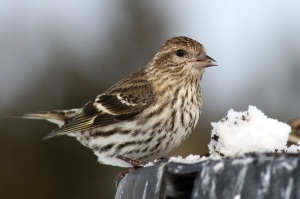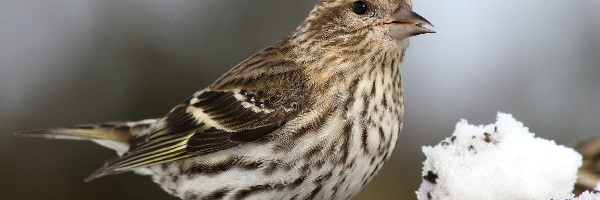
The Pine Siskin is a small finch, weighing less than 20 grams, that can be found across North America. (Photo Credit: Darren Swim, Wikimedia Commons)
Future irregular large-scale movements, technically known as irruptions, of boreal seed-eating birds in North America may be predictable using previous climate conditions according to a 24 year study of the Pine Siskin finches travel patterns.
Researchers have found that the birds’ irruptions typically occur in either a north-south or west-east pattern which can be linked with both climate conditions and concomitant areas favourable seed production.
Unusually cool and wet conditions over southern Canada, combined with dry conditions in the U.S. Appalachian Mountains likely drives the bird south to the continental U.S. A similar relationship was found when western Canada is unusually cool and wet and eastern Canada is warm and dry.
Original research paper published in PNAS on May 11, 2015.
Names and affiliations of selected authors
